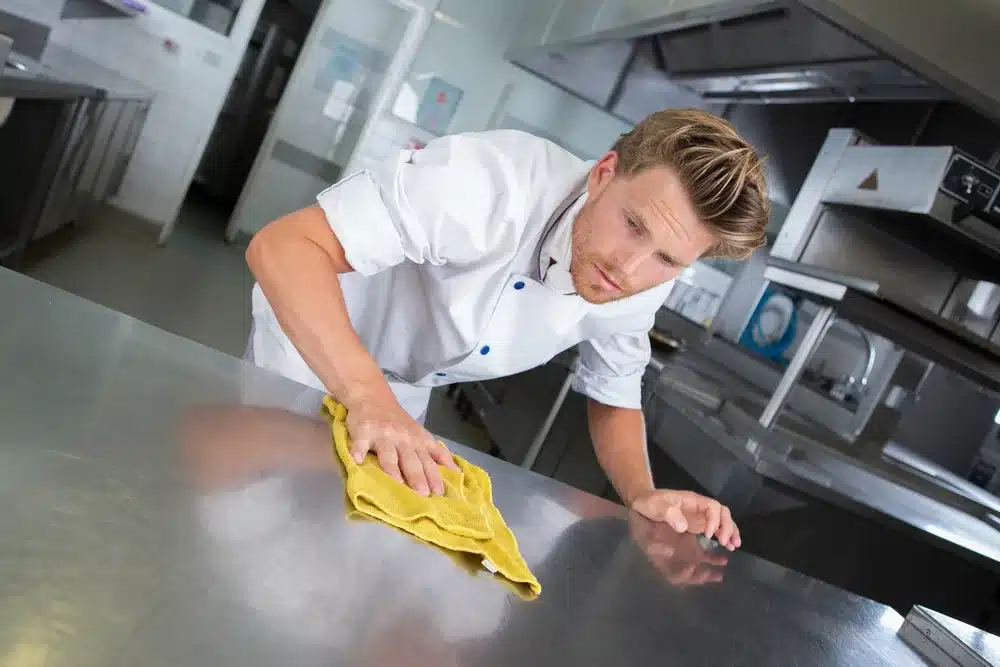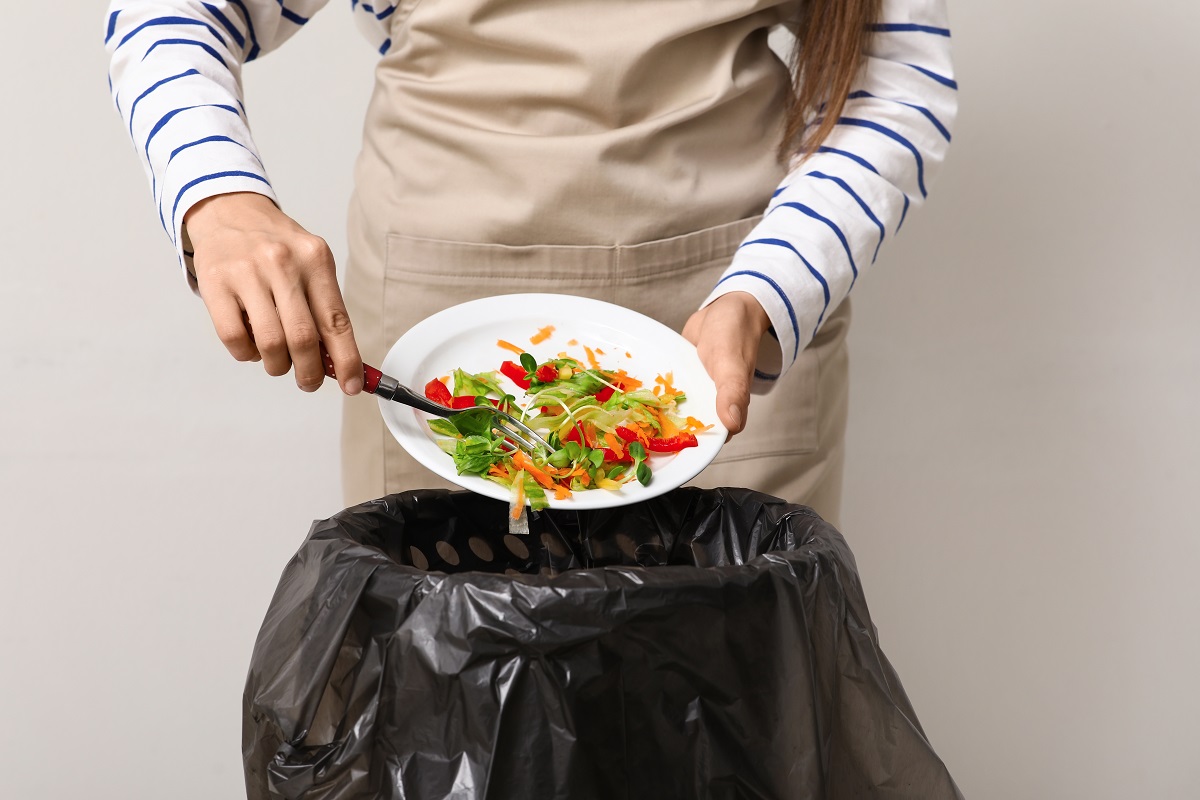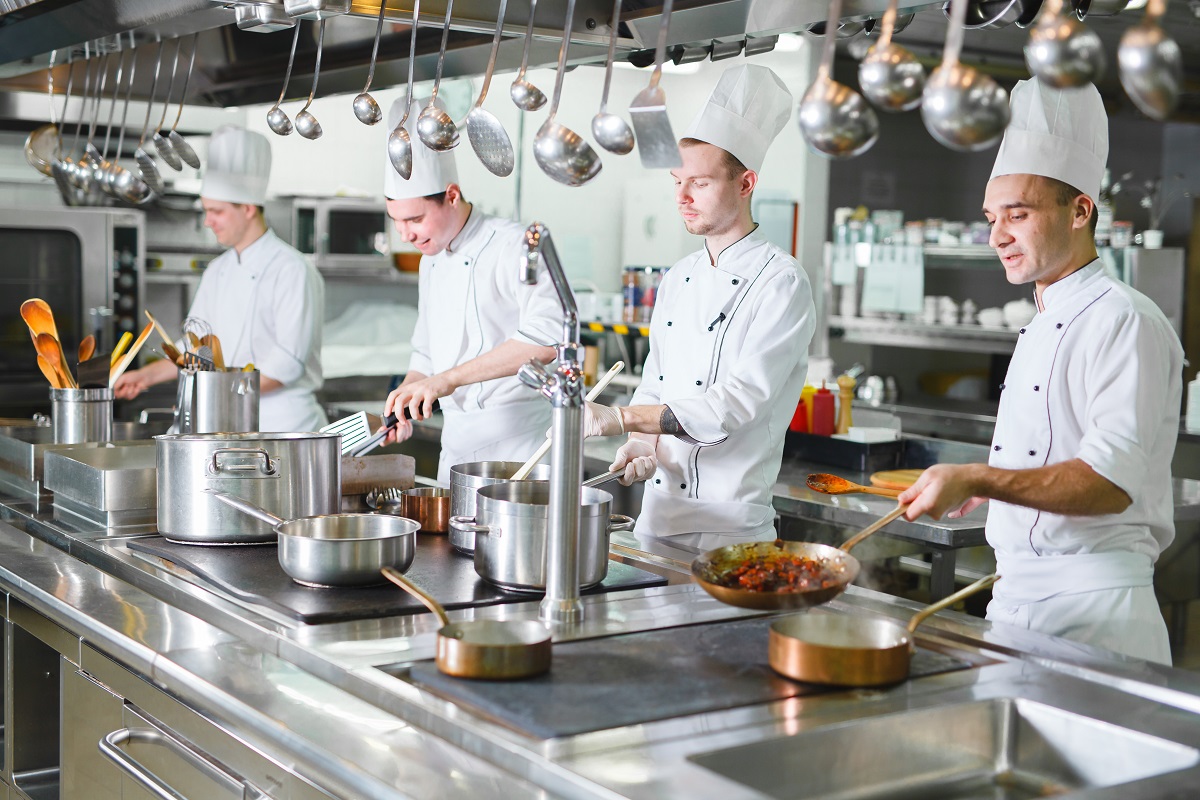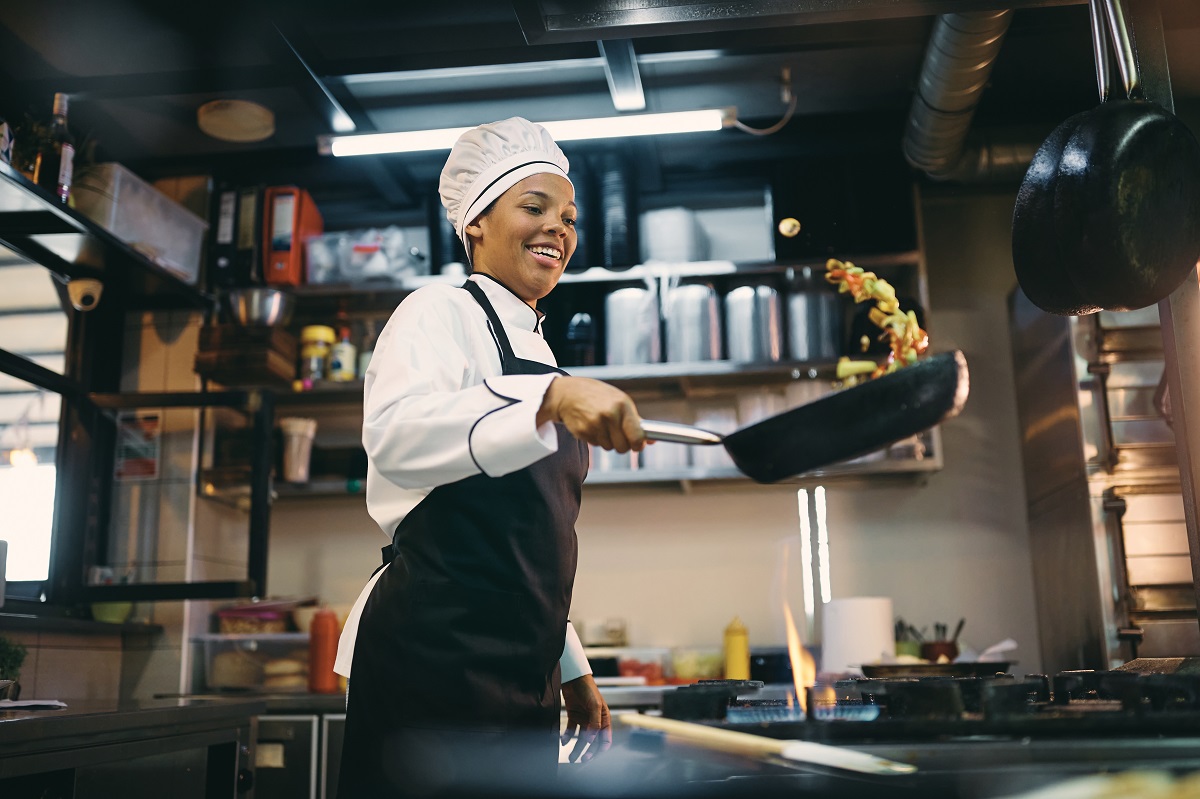Whether you manage a bustling quick-service restaurant or act as the head chef of a buzzy breakfast joint, you know that the safety and efficiency of your kitchen hinges on its order and cleanliness. While you and your team may take every precaution to ensure your counters and floors are free from debris, grease stains, and spills can still happen.
Unfortunately, how to clean spilled oil is less clear—until now.
Let’s walk through the process of how to clean up a grease spill so that your staff and patrons remain safe (and your restaurant can return to its wonderfully productive momentum). By applying these restaurant safety tips, you can help create a safer environment for everyone.
How Do You Clean Up Spilled Cooking Grease?
Spilled cooking grease poses three primary potential hazards:
- Slips and falls
- Burns and scalds
- A fire1
Needless to say, spilled cooking grease requires your urgent attention. But first? Pause and consider these best practices.
Precautionary Measures Before Clean-Up
You might be tempted to attack the cooking oil spill within seconds of it occurring. And yet, unless it’s old, cold, and recycled grease, allow the grease to cool before approaching the mess. This will curb the possibility of anyone getting burned.
Additionally:
- Inform your staff of the cooking oil spill and block off the area with signs
- Ensure your kitchen is properly ventilated before clean-up starts
Tools and Materials You Will Need
The tools and materials you’ll need will depend on where the spill took place. Typically, though, you’ll want to grab:
- A mop
- A broom and dustpan
- A vacuum
- Dish/kitchen towels
- Plastic scraper
- Absorbents (more on this below)
- Powerful, grease-fighting dish soap or a commercial degreasing product
- White vinegar2
- Ammonia
- Spoons
- Spray bottle
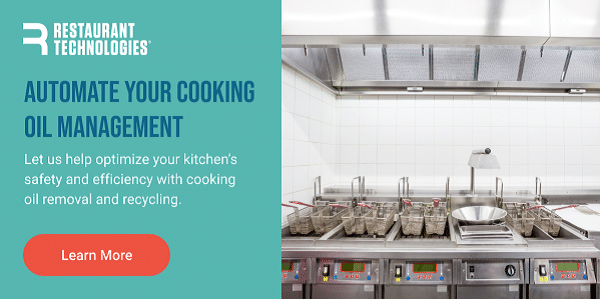
How Do You Clean Spilled Grease Off the Floor?
When cooking grease spills on the floor, your method of clean-up should be distinct to the type of flooring you have. Follow these tips for managing a restaurant and its cleanliness with our guide on how to clean up grease spills on the floor:
Steps for Hard Flooring
Hard flooring is ideal for grease clean-up. Your step-by-step approach should include:
- After the grease has cooled (if applicable), dab at the spill with your towels made of cotton or microfiber cloth.
- Cover whatever grease remains with some sort of absorbent, such as baking powder. This will encourage the grease to “rise” and clump together.
- Scrape up any residual grease with a plastic scraper, as metal may scratch your floor.
- Using a broom, sweep up the debris and dispose of it in a non-recycling bin.
- Mix warm water, dish soap, and vinegar (or a degreaser) in a mop bucket, soak and wring your mop, and mop up the area. If you’re using a degreasing agent, be sure to follow the manufacturer’s instructions to a T.
- Rinse thoroughly.
- Allow the floor to dry before letting employees return to the area.
Tips for Carpeted Floors
Carpeting may offer tired feet a touch of cushion and relief, but it does complicate the grease cleanup.
Fortunately, these restaurant cleaning procedures and tips may help3:
- After dabbing at the excess grease with towels, apply a generous amount of baking soda (or another absorbent).
- Use the back of a spoon to press the absorbent into the carpet. This will help pull the oil out of the carpet’s fibers.
- Vacuum the clumped-together substances.
- Soak up whatever moisture remains with towels before adding 3 ounces of ammonia to 12 ounces of water in a spray bottle. Spray the area of the spill with the cleaning solution, and blot out the excess with a clean, dry towel before rinsing with clean water.
- Apply a mixture of vinegar and water (use 12 ounces of water for every 4 ounces of vinegar).
- Let the vinegar and water solution sit on the spill for one minute before blotting out the excess liquid.
- Again, allow the area to dry before work resumes (if possible).
What is the Best Thing to Soak Up Oil With?
The solution for how to clean up cooking oil is made somewhat easier if you have a range of household and commercial absorbents on hand.
Commercial Absorbents
Commercial absorbents are an excellent resource for grease cleanup. Generally speaking, they’re broken down into:
- Powdered absorbents soak up grease much in the same way as talc, and may include natural compounds like cornstarch and sawdust.
- Granular absorbents help turn liquids into solids through the use of silica or clay.
Further, consider the value of absorbent pads. Made with sponge-like materials such as polypropylene and cellulose, they can be applied directly to the oil spill and discarded after use (rather than soiling or staining your kitchen and dish towels).
Household Items as Absorbents
A handful of the most effective household absorbents include4:
- Baking soda
- Cornstarch
- Flour
- Salt
Why are these effective? Because cooking oil is composed of hydrophobic molecules, which, as their name suggests, do not mix well with water. The “stickiness” of compounds in the staples above, such as starch and gluten, absorbs excess grease much in the way cat litter works.
Advanced Solutions for Managing Cooking Oil Spills
Grease spills may be a fact of life for those who work in the restaurant business; now you can implement solutions that will curb your chances of grease spills.
Those solutions rest in contemporary equipment, services, and technologies that were built with safety and efficiency in mind. From secure, hands-free oil delivery and disposal to automated monitoring, many tasks can now be managed with forward-thinking remedies.
Streamlining Your Kitchen Operations with Restaurant Technologies
Cooking oil is as important of an ingredient in your kitchen as your devoted staff members. But frequent cooking oil spills may become part of your past with Restaurant Technologies. That’s because we offer a full suite of commercial cooking oil management solutions.
Whether you’re searching for bulk oil tanks to enhance the quality and consistency of your dishes or want to increase your eco-friendly efforts with a revamped recycling strategy, Restaurant Technologies is here to meet your needs.
Explore our services today—and watch your eatery prosper as a result.
Sources:
- Firecode. Top 3 fire hazards in a commercial kitchen and how to prevent them. https://firecode.com/top-3-fire-hazards-in-a-commercial-kitchen-and-how-to-prevent-them
- How Stuff Works. 5 great ways to clean grease. https://home.howstuffworks.com/home-improvement/household-hints-tips/cleaning-organizing/5-great-ways-to-clean-grease.htm
- Stanley Steemer. How to remove grease and oil from carpet. https://www.stanleysteemer.com/blog/tips-tricks/how-to-remove-grease-and-oil
- Food Republic. The staple pantry ingredients you can use to clean up cooking oil spills. https://www.foodrepublic.com/1381180/staple-pantry-ingredients-can-use-clean-up-cooking-oil-spills
